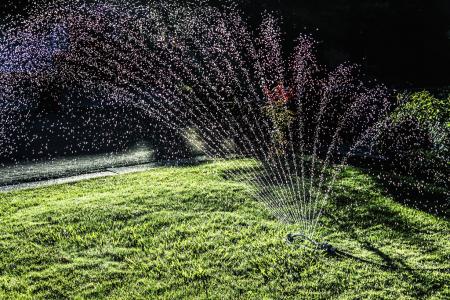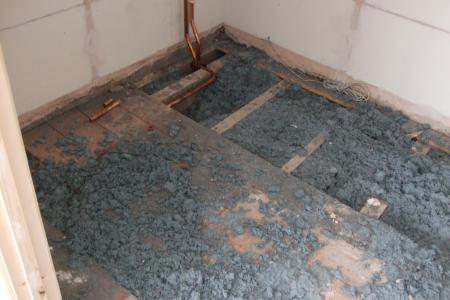Whether its eating carrots to help you see in the dark or
waiting an hour to swim after eating, our lives are full of myths about
how we should behave. But what are the biggest myths when it comes to
DIY?
Plentific.com has compiled a list of ten popular home improvement and DIY myths that are false, to give you peace of mind when you decide to renovate your home.
Stephen Jury, spokesperson for Plentific.com, said: “We all have that one friend or family member that swears by an age old myth when it comes to home improvements and DIY. Whether it’s an energy saving tip or secret cleaning hack, knowing what actually provides results and what is a waste of time can be tricky.”
1. Solar panels don’t work on a cloudy day – FALSE
With summer on the way, it may seem like the perfect time to invest and install solar panels, because everyone knows that solar panels need sunlight to work, right? Wrong! Although solar panels do work best on a sunny day, they are still functional on cloudy days. This is due to their ability to absorb UV and infrared light on cloudy days so that they can continue generating energy.
2. Leaving the heating on low all day is more efficient – FALSE
Many people believe that leaving the heating on low all day is more efficient than turning it on as and when you need it. This topic is widely debated on various heating and energy platforms, with the general consensus being that because no home is completely airtight there will always be a small degree of heat escaping from your home throughout the day.
Therefore, you will always waste heat, even if your system is on low. Only having the heating on when you need it would mean that there is no heat to be wasted when you’re not around, saving you money.
3. Bleach eliminates mould spores – FALSE
This is a common misconception due to the fact that bleach will kill and remove the visible mould in question. However, bleach will not be able to get rid of the mould spores altogether. This can be done with a scrubbing brush, water, and an appropriate cleaning product such as detergent.
Once the clean-up has been done, it’s worth also investigating the cause of the problem and then treating it effectively to prevent the mould from returning. Remember, mould can be as bad for your health as asbestos!
4. Painting a radiator will make it more efficient – FALSE
While it is a scientific fact that darker colours are better at absorbing and transmitting heat than lighter colours, covering a radiator in dark paint will not improve its efficiency.
The main way that radiators work is with ‘convective heating’, which essentially means that the radiator heats up the air around it. This is why some radiators have grooves or wings, as they increase the surface area and expose more air to the heat. Painting over a radiator can actually insulate this heat, which will in fact make the radiator less efficient!
 5. The best time to water the grass is the evening – FALSE
5. The best time to water the grass is the evening – FALSE
Another scientific fact is that heat evaporates water, so you would be forgiven for thinking that the best time to water your garden is in the evening once the sun goes down. Watering in the evening does have some benefits for soil, in that it is able to soak up and retain the water more efficiently. However, this also creates an ideal breeding ground for mould, fungi and other potential problems for your garden.
The best time to water your grass is, in fact, during the morning when the sun is first rising. This will ensure that the grass has time to absorb as much water as it needs to before the sun evaporates the excess throughout the day, preventing diseases and keeping your garden looking fresh for longer.
6. You can kill trees using copper nails – FALSE
It’s an age old myth that copper nails can kill trees, but in an ordinary healthy tree a copper nail will not have much of an effect. In fact, it’s thought that some plants use copper as a source of proteins that are essential for photosynthesis. There have even been cases of trees being chopped down to reveal rings of copper nails that the tree has actually grown around! The only way it seems this myth can be proved true, is by attaching a copper nail to the end of an axe when chopping it down!
 7. Asbestos always needs to be removed for health purposes – FALSE
7. Asbestos always needs to be removed for health purposes – FALSE
Although in some cases this is true, there are exceptions where there is no need to remove asbestos within your home. Contrary to common belief, asbestos isn’t actually harmful to your health unless the fibres become exposed or disturbed due to home renovations or decorating. Still, although materials containing asbestos won’t necessarily affect your health if left alone, it’s always important to check them on a regular basis for wear and tear as this is when damage can be done.
8. Put conkers in your window sill and in the corners of your bathroom keeps spiders at bay – FALSE
Many people will remember visiting their grandparents and finding little piles of conkers on the window sills and in the corners of the bathroom. The myth is that conkers contain a harmful chemical that wards off and can even kill spiders, making them ideal as a natural repellent. However, there is no scientific evidence to prove that this works. Instead of leaving conkers in your room to repel spiders, why not pop a couple in your wardrobe to keep moths away, as this is one myth that is proven to get results.
9. Coffee grounds unclog sinks – FALSE
This myth could be doing your sink more harm than good. In fact, coffee grounds are among some of the top causes of blocked drains. Emptying coffee grounds down a sink will create a build-up of thick slushy material that may require a plumber to unblock. Some plumbers even compare it to pouring cement down the sink!
10. Turning your electronics on and off at the plug uses more energy than leaving them on standby – FALSE
Switching appliances to standby mode instead of turning them off is a fairly common habit that many people have. Unfortunately, many electronic devices on standby mode will continue to use energy if the power is not cut at the source or the wall socket.
While some people believe turning devices on and off at the wallplug generates a surge in energy greater than leaving appliances on standby, this is often not the case. Having said that, the belief that turning off appliances at the switch stops the use of energy is also, in fact, false.

